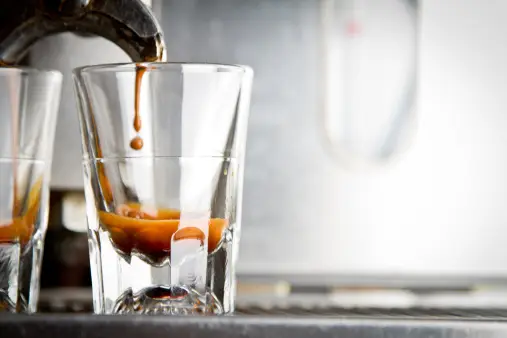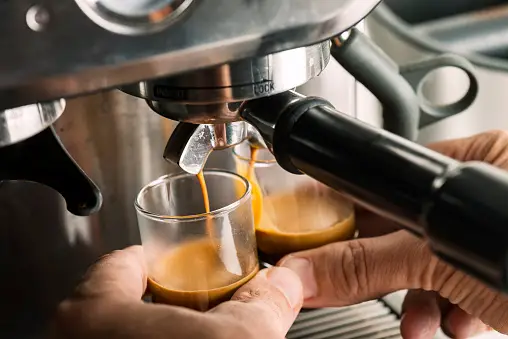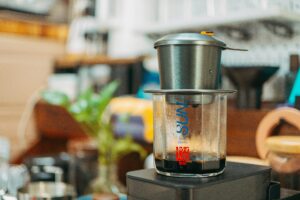In the vast realm of caffeinated beverages, two titans hold a revered place in the daily rituals and hearts of many: coffee and espresso. For most, the day doesn’t truly begin until the rich aroma of fresh brew wafts through the air. But what sets these two beloved drinks apart, and how do their stories intertwine with human history and culture? In this exploration, we peel back the layers to discern each beverage’s unique attributes, from their roots to the cup.
Table of contents

The Origin Story
Coffee: A Sinful Brew of Rich History
The legend of coffee weaves back to the Kaffa region in Ethiopia, where a goat herder named Kaldi observed his flock’s energetic behavior after consuming red berries from a certain shrub. From this humble beginning, the ‘wine of Arabia’ traveled to the Middle East and beyond, stimulating not just the body, but the intellectual gatherings of the time.
Espresso: The Swift Kick from Italy
In stark contrast, espresso is a relatively young sibling in the coffee family, born in the bustling Italian cafes of the early 20th century. Driven by a need for efficiency and a preference for concentrated brew, the espresso machine was patented, giving birth to a global phenomenon.
The Brewing Battleground
Coffee: A Dance of Extraction
The art of brewing coffee is a patient one, involving the careful balance of water temperature, grind size, and steeping time. Classical methods like drip brewing and pour-over accentuate the nuanced flavors and aromatic oils that are the hallmark of a good cup.
Espresso: The Under Pressure Brew
Espresso, on the other hand, rushes at an intensity that matches its maverick reputation. It’s about forcing hot water at high pressure through a finely-ground coffee, creating a small, concentrated, and velvety liquid that captures the essence of the coffee bean in a manner of seconds.
Coffee Roaster with Timer

The Taste of Passion
Coffee: A Symphony of Aroma
With its elaborate extraction process, coffee offers a rich and multifaceted taste profile that ranges from bright and acidic to dark and smoky. The slower brewing time enables a fuller-bodied cup that’s generally more palatable to a wide audience.
Espresso: Bold and Unadulterated
In contrast, the bold flavor of espresso is marked by its intense richness and complex acidity. It is the base for a myriad of drinks, each crafted to highlight its formidable character.
The Caffeine Chronicles
Coffee: A Gentle Awakening
Typically delivering less caffeine per ounce than espresso, coffee offers a milder buzz that may be stretched across several cups over the course of the morning. Its moderate content is attributed to the more prolonged extraction process.
Espresso: A Brisk Jolt
Espresso, with its concentrated nature, boasts a higher caffeine content per ounce, packing a faster and stronger punch. While a single shot might seem small, it can often suffice to jump-start the day for many.
Brewing the Perfect Cup
Differing Factors Yielding Excellence
The perfect cup of coffee often depends on the type of bean and roast, the quality of water, and the precision in the brewing process. For espresso, these variables also include the tamping pressure, the evenness of the puck, and the crema — the cherished golden layer that crowns a well-made shot.
The Melange of Beverages
Brewing Diversity in a Cup
Both coffee and espresso host an array of preparations that cater to diverse palates and occasions. From the cappuccinos that mark the start of a leisurely Italian day to the trendsetting flat whites, and from the quintessential Americano to the intricate macchiatos, each variation is a crafted balance of coffee and milk.
The Health Quandary
Unraveling the Brews’ Effects
There’s much to debate on the health benefits of coffee and espresso. While both contain essential nutrients and antioxidants, their excessive consumption may lead to issues such as insomnia or gastrointestinal distress. Fears of caffeine stunting growth or causing heart disease have largely been debunked, but as with all things, moderation is key.
The Sip That Shapes Cultures
The Ubiquitous Coffee and Espresso Cultures
From the vibrant coffeehouses of Vienna with their historical debate clubs to the contemporary hipster craft cafes, the culture surrounding coffee is as varied as the drink itself. Espresso demarcates Italian time with the perfunctory morning shot and the social significance of an evening caffe corretto as a shared experience of warmth and conversation.
The Future in the Brew
Innovation and Turbulence
The rise of third-wave coffee and the artisanal espresso movement have redefined the modern drinking experience. Beyond just a beverage, coffee and espresso are now avenues for social causes, ethical sourcing, and pioneering craft. The future holds a promise of further adventure in brewing techniques and flavors.

Frequently Asked Questions (FAQ)
What is the main difference between coffee and espresso?
The primary difference lies in the method of preparation. Coffee is brewed by pouring hot water over ground coffee beans and allowing it to steep, while espresso is made by forcing a small amount of nearly boiling water through finely ground coffee beans under high pressure.
Can espresso beans be used to make regular coffee?
Yes, espresso beans can be used to make regular coffee. The main difference between espresso and regular coffee beans is the roast level; espresso beans are roasted for a longer period, which gives them a darker and richer flavor profile. However, the grind size should be adjusted according to your brewing method.
Is espresso stronger than coffee?
Espresso is stronger than coffee in flavor and in caffeine content per unit volume. However, because espresso servings are smaller, a single shot of espresso might contain less total caffeine than a full cup of coffee.
How does the milk affect espresso-based drinks?
Milk can soften and balance the intense flavor of espresso, adding a creamy texture and sweetness that complements the espresso’s body. The temperature and foam of the milk are also crucial in creating popular espresso-based drinks like lattes and cappuccinos, as they influence the overall taste and presentation.
Can you make espresso without a machine?
While traditional espresso requires high pressure that is usually achieved with a machine, there are alternative methods to create espresso-like coffee. Using a stovetop espresso maker, such as a Moka pot, or an AeroPress can produce a strong, concentrated coffee that closely resembles espresso, though it may lack the crema that a machine can generate.
How do you clean an espresso machine?
Regular cleaning is vital for maintaining the quality of espresso and the durability of the machine. This typically involves backflushing with water (and cleaner for machines that allow it), cleaning the basket and portafilter, and descaling the machine according to the manufacturer’s instructions to remove mineral buildup.
Why is crema important in espresso?
Crema, the layer of creamy foam on top of an espresso shot, is considered a sign of a well-extracted espresso. It adds to the richness and complexity of the flavor. The presence of crema is also an indicator of the freshness of the coffee beans and the skill of the person making the espresso.
Choosing Your Brew
The Deciding Cup
Ultimately, the choice between coffee and espresso is a matter of personal taste and the surrounding experience. Both have their place in the spectrum of daily life — one offering a companion for slow contemplation, the other a catalyst for a galvanized day.
Coffee and espresso, while sharing a common lineage, have evolved uniquely, reflecting our own varied needs and expressions. In celebrating their differences, we honor the roots from which they’ve grown and the cup they’ve come to embody. Whether you’re a connoisseur, a day-breaker, or an aficionado, it’s this variety and richness that make the world of caffeinated beverages one worth savoring.






